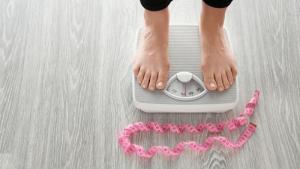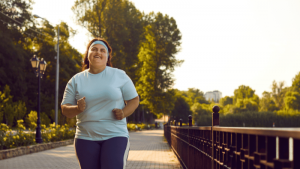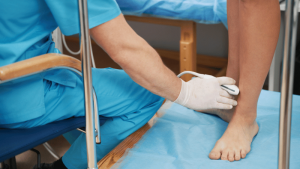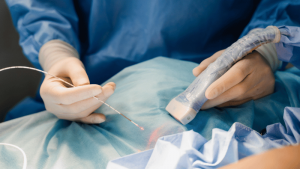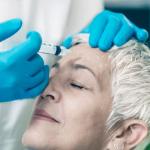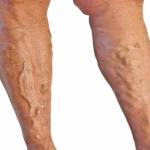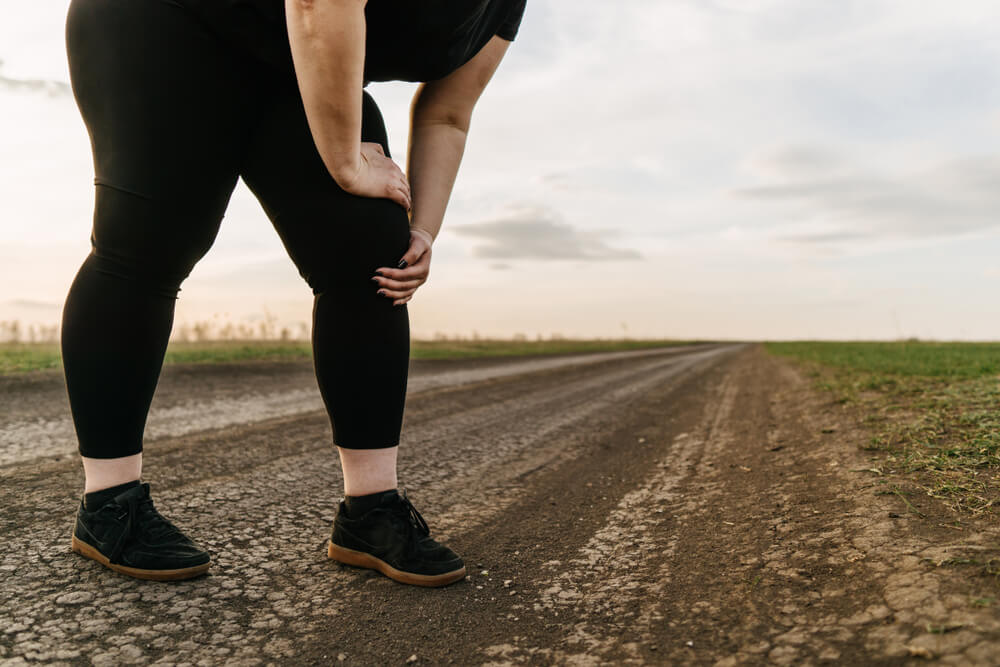
Many people associate being overweight with heart disease or joint pain—but did you know that your veins can also be affected? Additional body weight increases pressure on veins, weakens circulation, and raises the risk of vein disease. These symptoms can further develop into varicose veins, spider veins, and even dangerous blood clots.
While excess weight significantly impacts vein health, losing weight can boost circulation and potentially reduce the appearance of varicose veins. In this post, we’ll explore the connection between weight and vein disease, how weight loss may help alleviate varicose vein symptoms, and the steps you can take to protect your vein health.
Find out the status of your vein health with our quick quiz.
Understanding Vein Disease and Circulation Issues
Vein disease occurs when tiny one-way valves in your veins weaken, making it difficult for blood to flow upward toward your heart. Over time, excess strain or pressure on these veins can cause the valves to malfunction. This malfunctioning can result in blood flowing backward and pooling in your legs, ankles, and feet. This can lead to symptoms such as:
- Spider veins
- Varicose veins
- Swelling
- Pain or cramping that subsides after elevating the legs
- Tired or heavy feelings in the legs
Poor circulation from vein disease can impact vein health and cause further complications if left untreated.
How Excess Weight Impacts Vein Health
Obesity and Varicose Veins
Increased body mass increases stress on vein valves, making it more difficult for blood to flow back to the heart. Over time, this added strain can contribute to venous insufficiency and the formation of varicose veins. The National Institutes of Health report that obese individuals face a higher risk of developing chronic venous insufficiency (CVI) due to the heightened pressure caused by excess body weight.
Weight Gain and Poor Blood Flow
Carrying extra weight triggers inflammation in the body, which impairs circulation. Restricted blood flow, in combination with a sedentary lifestyle, worsens swelling and promotes the formation of varicose veins.
Other Vein Issues Related to Weight
Being overweight also raises the risk of deep vein thrombosis (DVT) and other types of blood clots. Poor circulation can lead to fluid retention, causing leg swelling (edema). Chronic inflammation in overweight individuals further weakens vein walls, making veins more prone to damage and increasing the likelihood of vein disease.
Will Losing Weight Help Varicose Veins?
Managing weight can reduce strain on the veins, which may alleviate varicose vein symptoms and enhance blood circulation. However, shedding excess pounds alone cannot fully repair vein valve damage that has already occurred. Medical treatment may still be necessary to address existing vein damage. Minimally invasive treatment options can help reduce varicose veins’ visual and physical effects.
What Happens to Blood Vessels When You Lose Weight?
When you lose weight, your circulation improves, allowing blood to move more efficiently and reducing blood pooling in the legs. This weight reduction relieves symptoms like swelling and pain and helps slow vein disease progression. Weight loss also decreases inflammation, improves macro vein function, and provides long-term relief from venous pressure.
Appearance of Varicose Veins Before and After Weight Loss
After losing weight, varicose veins may appear more visible due to less fat covering them, making them stand out more. While weight loss does not eliminate existing varicose veins, it can help prevent new ones from developing.
Although veins may become more pronounced after weight loss, the overall impact on vein health is positive. Maintaining a healthy weight helps lessen the strain on your veins, contributing to better vein function and lowering the risk of future vein issues and other conditions associated with having extra weight.
Is Being Overweight the Only Cause of Varicose Veins?
While excess weight increases the risk of varicose veins, several other factors contribute to this condition.
Genetics, age, pregnancy, and prolonged periods of sitting or standing can all lead to vein problems. Even individuals at a healthy weight can still develop varicose veins due to other risk factors.
Knowing the risk factors commonly associated with varicose veins can help prevent or manage vein issues more effectively.
- Genetics: If you have family members with varicose veins, you’re more likely to develop them. If both of your parents have varicose veins, your risk further increases.
- Age: The risk increases with age, especially after 50.
- Sex: Women are about four times more likely to develop varicose veins.
- Pregnancy: Hormonal changes and increased blood volume can contribute to vein disease.
- Prolonged Sitting or Standing: If you have a job where you sit or stand a lot throughout the day, you are at higher risk for developing vein disease.
- High Blood Pressure (Hypertension): High blood pressure strains veins and can lead to varicose veins.
How to Improve Vein Health Through Lifestyle Changes
Regular Vein Health Screenings
Reducing body weight alone may not eliminate vein disease, as some damage is irreversible without treatment. Regular vein screenings are essential for assessing circulation and valve function and identifying early signs of vein disease. If you’re experiencing symptoms, such as non-healing leg wounds or other signs of circulation problems, scheduling a screening could help diagnose underlying vein problems, especially if you have other risk factors.
Exercise and Movement for Healthy Circulation
Integrating regular physical activity, such as walking, cycling, and swimming, into your routine promotes healthy circulation. It also reduces pressure on veins, helping to prevent varicose veins. Prolonged sitting or standing can negatively impact vein function and worsen the condition. Elevating your legs and adding stretching into your daily routine can also relieve pressure on veins.
Learn Exercises for Varicose Veins
Nutrition for Vein Support
A diet rich in fiber and antioxidants, including foods like fruits, vegetables, and whole grains, supports vein health by reducing inflammation. Staying well-hydrated is also important for proper blood flow and optimal vein function.
Addressing Vein Issues Beyond Weight Loss
Losing weight will significantly improve your health, but it will not get rid of existing varicose and spider veins. You would need to visit a vein specialist for a diagnosis. After you receive a diagnosis, a vein specialist will develop a treatment plan based on your condition. USA Vein Clinics offers a range of minimally invasive outpatient treatments designed to provide lasting relief without surgery. These procedures require minimal recovery times, meaning you can return to most normal activities shortly after your treatment.
Some of the treatments we offer include:
- Endovenous Laser Treatment (EVLT): Laser therapy targets and closes off diseased veins.
- ClariVein®: Delivers a special medication to damaged veins using a tiny rotating wire catheter (also referred to as a rotating fiber).
- Varithena: Using ultrasound guidance, foam fills and collapses the affected veins and reroutes blood flow to healthy veins.
- Ultrasound-guided sclerotherapy (UGSC): A sclerosant solution targets and closes damaged veins.
- Radiofrequency Ablation (RFA): Uses heat energy to close faulty veins and restore normal circulation.
- VenaSeal™: A medical adhesive that seals off damaged veins to improve blood flow.
- Visual sclerotherapy: Involves injections to treat spider veins and smaller varicose veins.
Why is Early Intervention Critical?
Delaying treatment can lead to worsening symptoms like chronic pain, swelling, and skin changes. Untreated vein disease can also progress to more severe conditions, such as venous ulcers, deep vein thrombosis (DVT), or mobility issues due to impaired circulation.
USA Vein Clinics provides customized care to address your vein health needs. Our non-surgical outpatient treatments are designed to relieve discomfort and prevent further complications. Don’t wait to seek the treatment you deserve. Schedule an appointment today and take the first step toward healthier veins.
Find a Vein Specialist Near You

